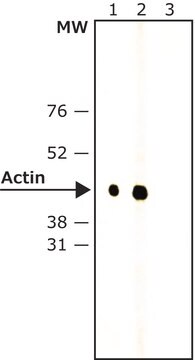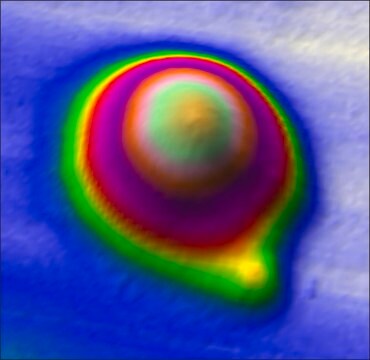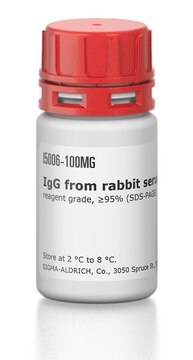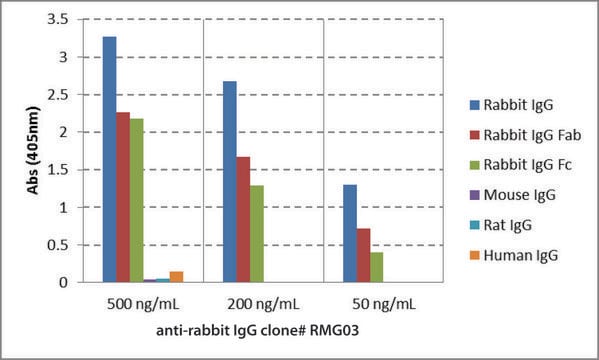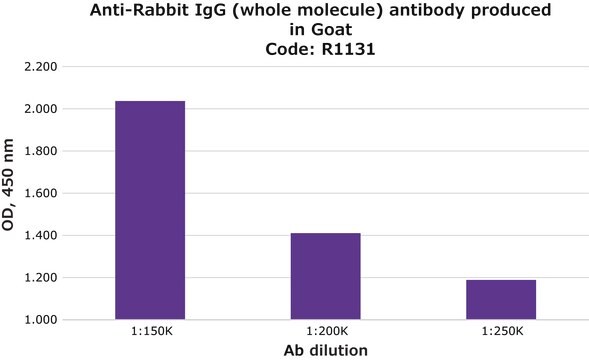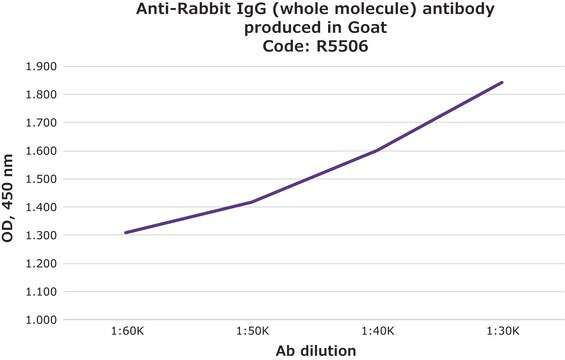R2655
Monoclonal Anti-Rabbit IgG, Native antibody produced in mouse
clone RabT-50, purified from hybridoma cell culture
About This Item
Productos recomendados
origen biológico
mouse
Nivel de calidad
conjugado
unconjugated
forma del anticuerpo
purified immunoglobulin
tipo de anticuerpo
secondary antibodies
clon
RabT-50, monoclonal
formulario
buffered aqueous solution
reactividad de especies
rabbit
no debe reaccionar con
human, rat, chicken, cat, bovine, monkey, goat, pig, horse
concentración
~1 mg/mL
técnicas
immunocytochemistry: suitable
indirect ELISA: suitable
western blot: 1-2 μg/mL using 10 ng of non-reduced rabbit IgG (Cat. No. I5006) per lane
isotipo
IgG1
Condiciones de envío
dry ice
temp. de almacenamiento
−20°C
modificación del objetivo postraduccional
unmodified
Categorías relacionadas
Descripción general
Especificidad
Inmunógeno
Aplicación
- immunoblotting
- immunocytochemistry
- immunohistochemistry
- enzyme-linked immunosorbent assay (ELISA)
Acciones bioquímicas o fisiológicas
Forma física
Almacenamiento y estabilidad
Cláusula de descargo de responsabilidad
¿No encuentra el producto adecuado?
Pruebe nuestro Herramienta de selección de productos.
Producto relacionado
Código de clase de almacenamiento
10 - Combustible liquids
Punto de inflamabilidad (°F)
Not applicable
Punto de inflamabilidad (°C)
Not applicable
Equipo de protección personal
Eyeshields, Faceshields, Gloves, type ABEK (EN14387) respirator filter
Certificados de análisis (COA)
Busque Certificados de análisis (COA) introduciendo el número de lote del producto. Los números de lote se encuentran en la etiqueta del producto después de las palabras «Lot» o «Batch»
¿Ya tiene este producto?
Encuentre la documentación para los productos que ha comprado recientemente en la Biblioteca de documentos.
Los clientes también vieron
Nuestro equipo de científicos tiene experiencia en todas las áreas de investigación: Ciencias de la vida, Ciencia de los materiales, Síntesis química, Cromatografía, Analítica y muchas otras.
Póngase en contacto con el Servicio técnico